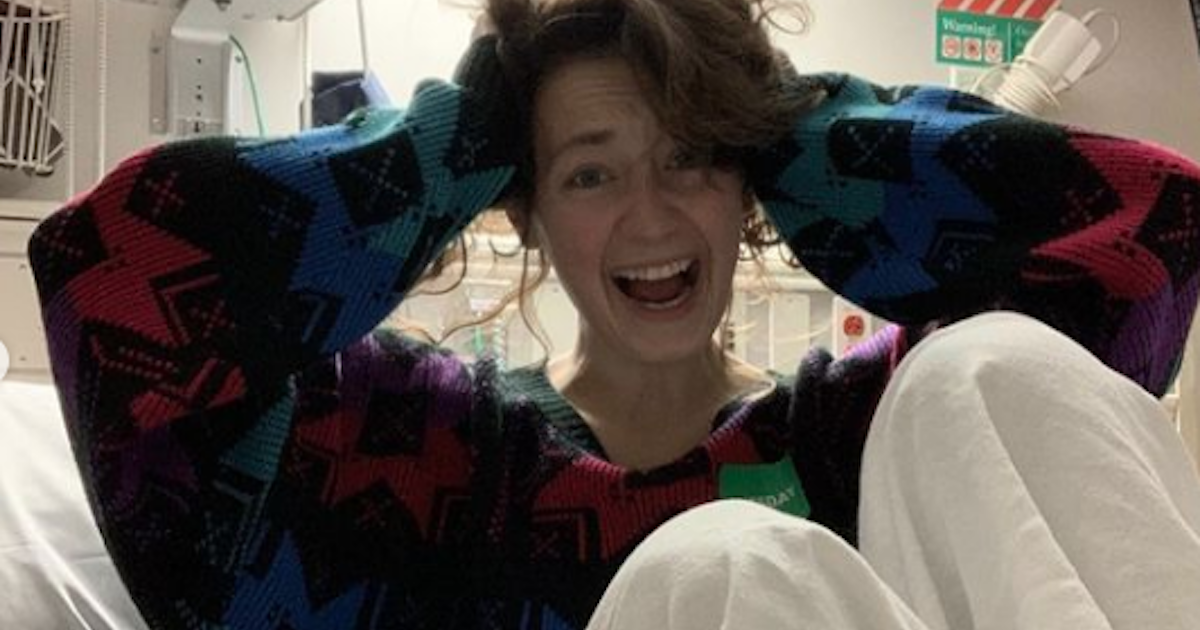Skin Cancer Crusader Kassidy Pierson Entered Hospice in July
- Kassidy Pierson, 27, passed away earlier this month after a five-year battle with stage IV melanoma
- She was first diagnosed as stage III but the cancer metastasized after her oncologist opted not to treat the disease in the year after her diagnosis
- Pierson, who leaves behind an 8-year-old son Hunter, spent her final years educating people about the dangers of skin cancer and encouraging screenings via her Tik Tok
Kassidy Pierson was just 21 when she was diagnosed with stage III melanoma. However, it was three years before that when she first noticed a suspicious mole but opted to ignore the growth.
Read More
And so, Pierson decided that she would turn her tragedy into a teachable moment. She did this by becoming one of the most popular cancer-awareness influencers on social media.
Pierson was active on most social media platforms but reached her biggest audience by far on Tik Tok. Her bio on Tik Tok was just two words: “currently dying.”
Pierson attracted followers by sharing information and tips from her cancer battle.

For instance, in one video, she spoke about switching oncologists after her first doctor opted not to treat her melanoma in that first year after diagnosis.
When she returned to the doctor a year later, the cancer had spread beyond her lymph nodes, and her diagnosis changed to stage IV.
Pierson did get an oncologist better suited to her needs. But now, she had fewer treatment options and no guarantees.
“I was having surgery for a partial hip replacement at the age of 22, only one month after having part of my lung removed,” said Pierson. “I’ve done many different kinds of treatments, including immunotherapy, chemo, targeted therapies, studies that were available at the time, clinical trials, radiation, and multiple surgeries.”
Pierson is survived by her 8-year-old son Hunter and fiance Christopher Pittman. Her sister Kady shared the news of her passing.
“I know I’m not the face you want to see. I am [Kassidy’s] older sister. And so I’m coming on here to let you guys know that she did pass away on Tuesday night,” wrote Kady Pierson, who noted that she was “not alone” and “not in pain.”
Kady then shared some kind words about her sister’s fans.
“I wanted to also come on and thank you all so much for following and supporting, and I can’t tell you the amount of times that she would just break down crying because she couldn’t believe how many people just loved her from this platform,” wrote the grieving sibling. “So just thank you so much for all that you have done for her.”
Examining Your Skin for Melanoma: Remember ABCDE
Doing regular self-checks is crucial in detecting skin cancer. And it is equally important to notify a health care provider if anything seems amiss.
Amiss how? Dr. Cecilia Larocca, a dermatologist at Dana-Farber Cancer Institute, recommends looking at your skin once a month using the acronym ABCDE as a checklist:
Asymmetrical moles: if you drew a line straight down the center of the mole, would the sides match?
Borders: irregular, jagged, not smooth; can also stand for bleeding
Colors: multiple distinct colors in the mole
Diameter: larger than 6mm, about the size of a pencil head eraser
Evolution: This may be the most important, anything that is changing over time such as gaining color, losing color, painful, itching, hurting, changing shape, etc…
Examining Your Skin For Melanoma
Surgery Is Often The Best Option for Melanoma
“The gold standard for treatment of melanoma is surgical treatment with wide margins,” says Dr. Nima Gharavi, director of dermatologic surgery at Cedars-Sinai.
In some cases of early-stage melanoma that is close to the skin surface, Mohs surgery might be offered at some institutions. Mohs surgery is a microscopically controlled surgery that removes skin cancer by conservatively cutting along the entire margin until the surgeon reaches clear tissue. It’s most often used to remove other skin cancers like basal cell and squamous cell carcinomas.
Is Surgery the Best Option for Melanoma?
Dr. Sapna Patel, associate professor of medicine in melanoma medical oncology at the University of Texas M.D. Anderson Cancer Center, says when a patient is newly diagnosed with melanoma they often see a surgeon along with a medical oncologist. “And we decide if the proper approach is to do surgery followed by some preventative therapy by the medical oncologist,” Dr. Patel said in a previous interview with SurvivorNet.
In some cases, the medical oncologists treats the cancer first to minimize the extent of surgery.
“That’s called a neoadjuvant approach where we do treatment before standard surgery and then possibly do some treatment after surgery. All of this is a guise to try to improve outcomes,” Dr. Patel says. “Once resected, melanoma can still come back and that’s because it can hide in a microscopic form inside the body. Microscopically, there’s no blood tests that will pick it up at the current moment…And there’s no CT scan or PET scan or MRI that picks up microscopic disease. Those only pick up macroscopic visible to the eye disease. So we are doing surgery and medical oncology therapy either immunotherapy or targeted therapy in an effort to eradicate the microscopic disease.”
Learn more about SurvivorNet's rigorous medical review process.


